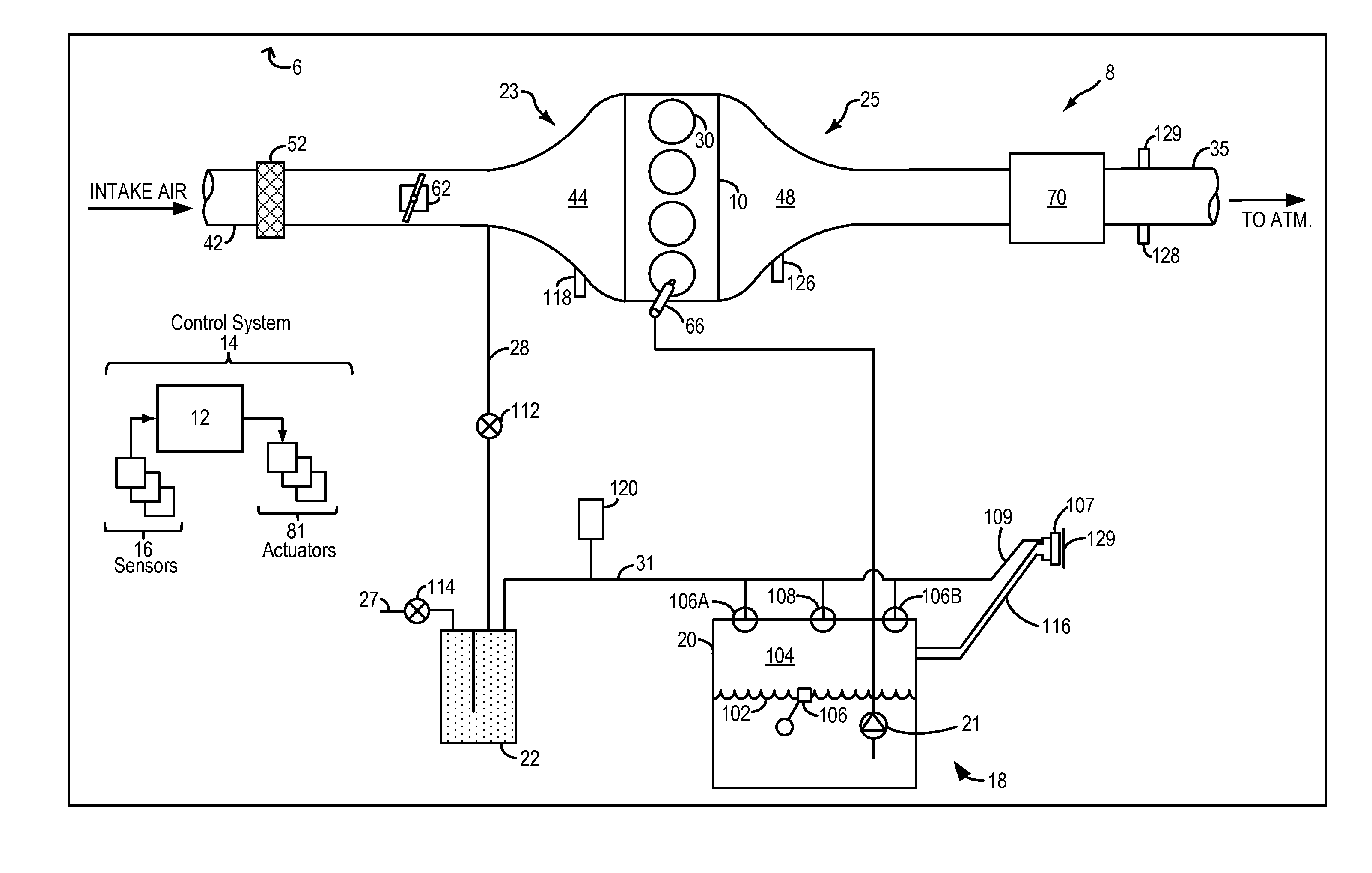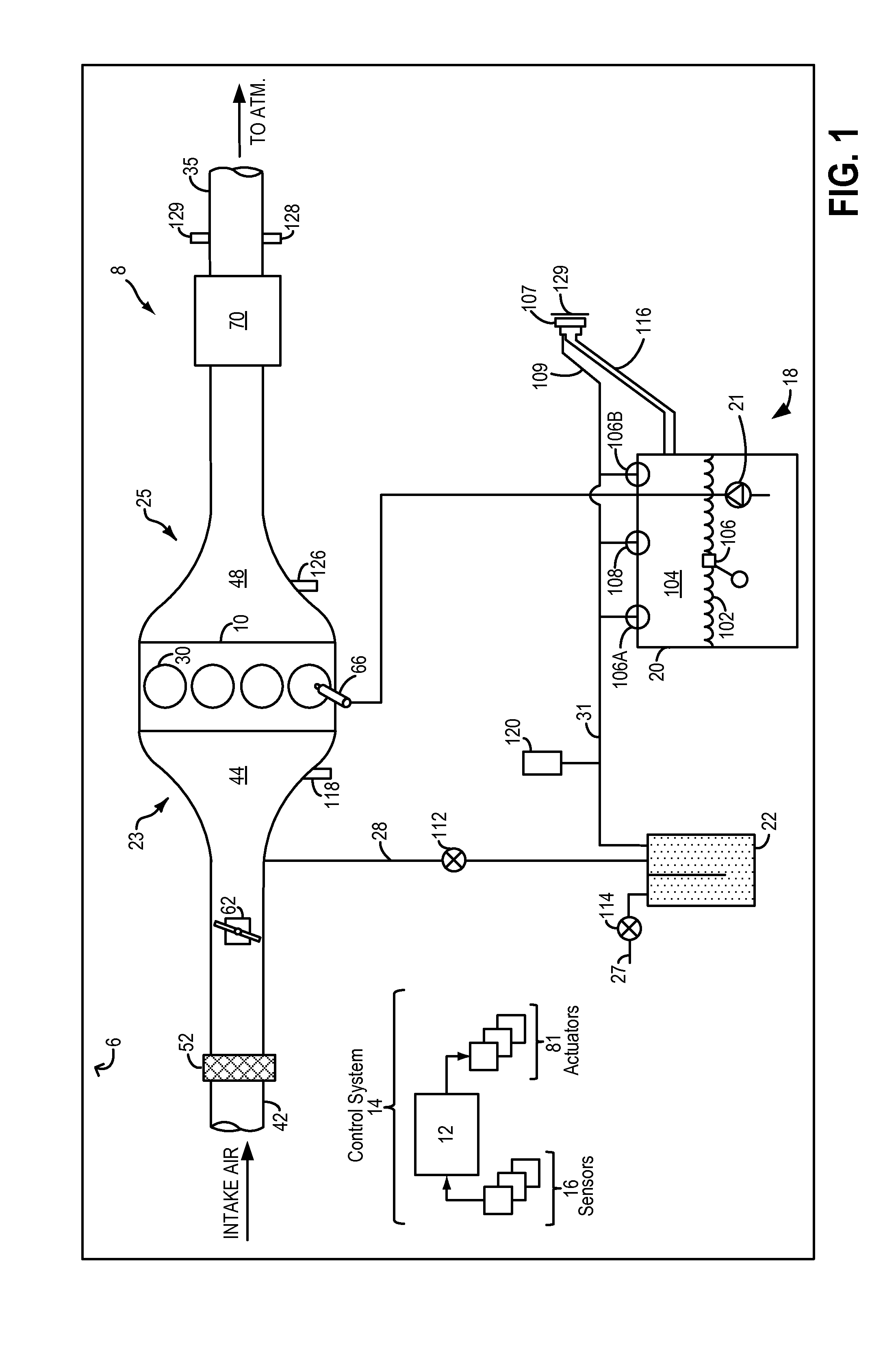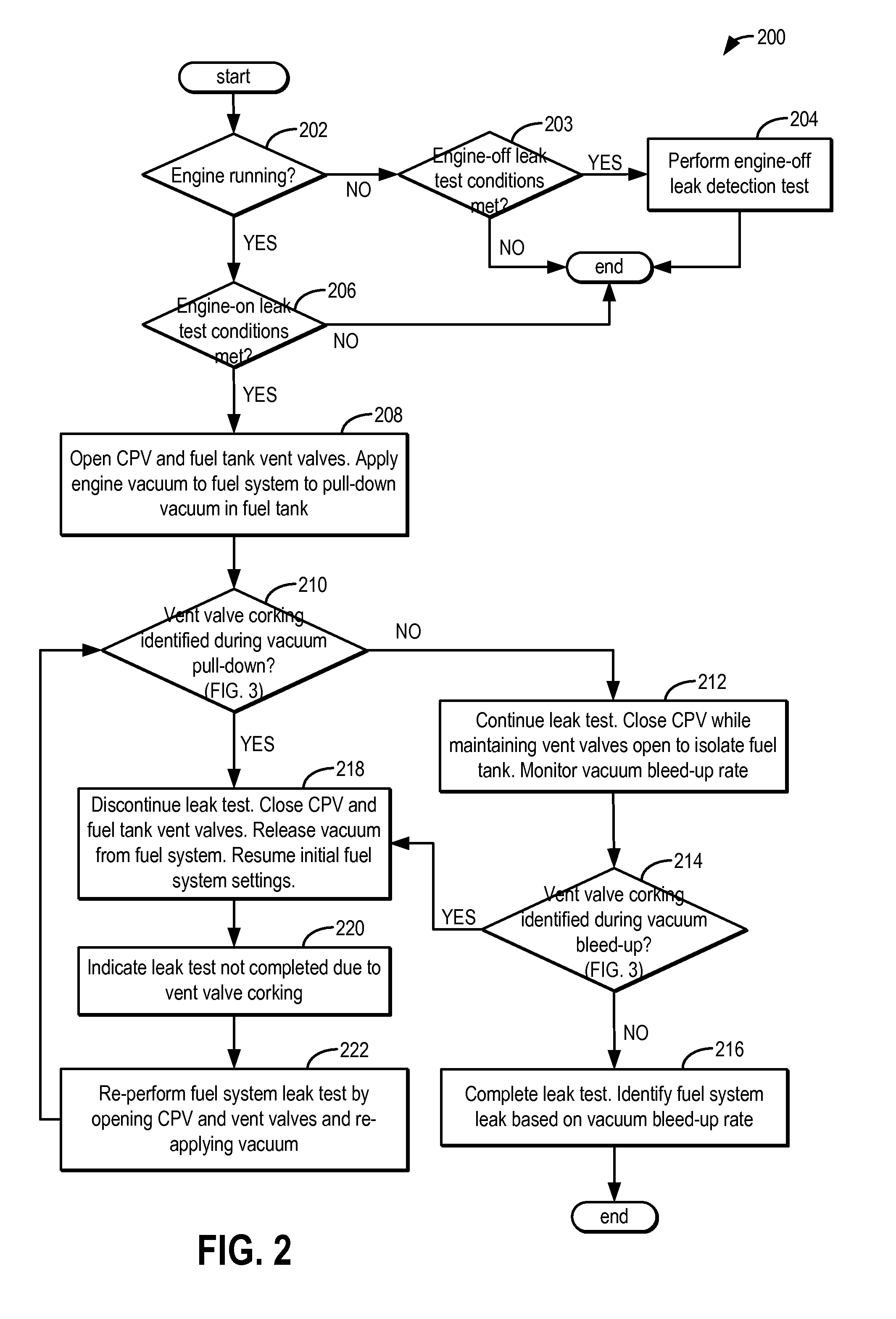Fuel system diagnostics
a fuel system and diagnostic technology, applied in the field of fuel system diagnostics, can solve the problems of increasing the possibility of false positive leak detection, and the approach of suzuki may not sufficiently address false leak detection, so as to reduce the release of fuel vapors
- Summary
- Abstract
- Description
- Claims
- Application Information
AI Technical Summary
Benefits of technology
Problems solved by technology
Method used
Image
Examples
Embodiment Construction
[0018]Methods and systems are provided for identifying leaks in a fuel system coupled to a vehicle engine, such as the fuel system of FIG. 1. An engine-on negative pressure leak test may be performed on the fuel system while the vehicle is moving. A controller may be configured to perform a control routine, such as the example routine of FIG. 2, to apply engine intake vacuum on the fuel system and determine a fuel system leak based on a rate of subsequent vacuum bleed-up. The controller may perform a routine, such as the routine of FIG. 3, to identify temporary unintended closing of a fuel tank vent valve based on fuel tank pressure inflections experienced during a vacuum pull-down or vacuum bleed-up phase of the leak test. The controller may complete the leak test only if no pressure inflections are experienced during the leak test. Else, if a temporary unintended closing of a fuel tank vent valve is determined during the leak test, the controller may discontinue the leak test and ...
PUM
 Login to View More
Login to View More Abstract
Description
Claims
Application Information
 Login to View More
Login to View More - R&D
- Intellectual Property
- Life Sciences
- Materials
- Tech Scout
- Unparalleled Data Quality
- Higher Quality Content
- 60% Fewer Hallucinations
Browse by: Latest US Patents, China's latest patents, Technical Efficacy Thesaurus, Application Domain, Technology Topic, Popular Technical Reports.
© 2025 PatSnap. All rights reserved.Legal|Privacy policy|Modern Slavery Act Transparency Statement|Sitemap|About US| Contact US: help@patsnap.com



